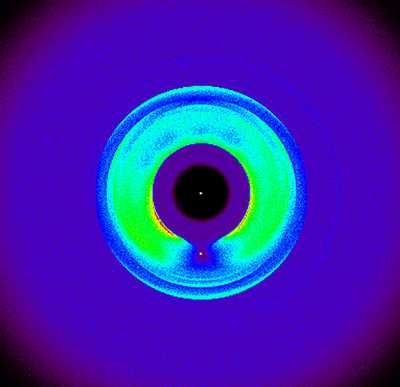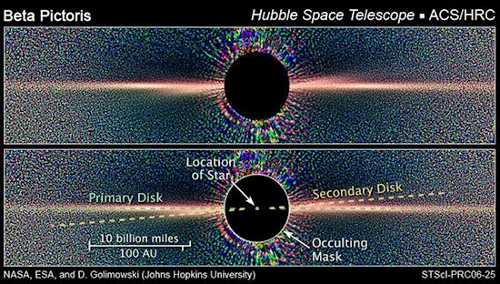
Did you know that the Earth has a dust tail? The Spitzer Space Telescope sailed right through it a few months ago, giving researchers a clear idea of what it looks like. That could be a big help to planet hunters trying to track down alien worlds.
“Planets in distant solar systems probably have similar dust tails,” said Spitzer project scientist Mike Werner. “And in some circumstances these dust features may be easier to see than the planets themselves. So we need to know how to recognize them.”
It's extremely challenging – and usually impossible – to directly image exoplanets. They're relatively small and faint, hiding in the glare of the stars they orbit.
“A dust tail like Earth's could produce a bigger signal than a planet does. And it could alert researchers to a planet too small to see otherwise,” Werner said.
Earth has a dust tail not because the planet itself is particularly dusty, but rather because the whole solar system is.
Interplanetary space is littered with dusty fragments of comets and colliding asteroids. When Earth orbits through this dusty environment, a tail forms in the rear, akin to swaths of fallen leaves swirling up behind a streetsweeper.
“As Earth orbits the sun, it creates a sort of shell or depression that dust particles fall into, creating a thickening of dust – the tail – that Earth pulls along via gravity,” explained Werner. “In fact, the tail trails our planet all the way around the sun, forming a large dusty ring.”
Spitzer's recent observations have helped astronomers map the structure of Earth's dust tail and figure out what similar “tell-tale tails” attached to alien planets might look like.

Like our own solar system, other planetary systems are infused with dust that forms a dusty disk encircling the central star. And like Earth, exoplanets interact with their dust disk gravitationally, channeling and drawing strange features into it.
“In some stars' dust disks there are bumps, warps, rings, and offsets telling us that planets are interacting with the dust,” said Mark Clampin of NASA's Goddard Space Flight Center. “So we can 'follow the dust' to the planets. So far, we've seen about 20 dust disks in other solar systems. And in some of those cases, following the dust has already paid off.”
Clampin, Paul Kalas and colleagues were looking for a planet around the bright southern star Fomalhaut when they unexpectedly found a dust ring. The shape of that ring led them to their goal.
“We suspected that the ring's sharp inner edge was formed by a planet gravitationally clearing out the surrounding debris,” said Clampin. “We tracked the planet by this 'footprint' in the dust.”
Another Hubble image shows a dusty disk around Beta Pictoris, a star in the constellation Pictor, or “Painter's Easel.”
“Note the smaller dust ring that's tilted with respect to the larger dust disk,” said Clampin. “Like Earth, this planet is shepherding the dust into its orbital plane.”
Clampin explained why it's hard to see the Earth's dust tail from within our solar system: “Imagine looking at fog on the Golden gate from above where you can clearly see the structure. If, on the other hand, you are standing on the bridge, it's a lot harder to discern the shape of the cloud.”
Clampin and Werner said Spitzer's observation of Earth's dust tail and these initial observations of dust structures in distant solar systems set the stage for the planet hunting debut of the James Webb Space Telescope. The telescope, targeted to launch in 2014, is a large, infrared-optimized space telescope. For more information, see www.jwst.nasa.gov/ .
They fully expect the huge and powerful new telescope to spot many tell-tale tails ... of the alien variety.
Follow Lake County News on Twitter at http://twitter.com/LakeCoNews , on Facebook at http://www.facebook.com/pages/Lake-County-News/143156775604?ref=mf and on YouTube at http://www.youtube.com/user/LakeCoNews .


 How to resolve AdBlock issue?
How to resolve AdBlock issue? 





